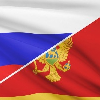Food in Montenegro: how to allocate the budget correctly?
This is an automatic translation.
Click here to read the publication in the original language.
Estimating the cost of food for tourists planning a vacation in Montenegro is one of the most burning issues. We hope that this review will help vacationers to properly plan their expenses and spend more time on entertainment, walking and sightseeing.
General moments
In comparison with the pan-European, food prices in Montenegro are not too high. At the same time in public catering establishments, it is often more profitable to eat than for oneself. First, it is faster and more convenient, and secondly — it's more useful, because in supermarkets the products are ordinary, and in restaurants and cafes — only fresh, without preservatives and other chemicals.
Pay attention to the region where you plan to rest — the prices vary so much that sometimes you can not even believe your eyes. For example, in remote mountain areas of Montenegro, the cost of food and prices in public catering establishments can be several times lower (up to 3 times). The most expensive products you will see in the area of the Budva Riviera (Budva, Kotor, etc.)
Restaurants in Montenegro are divided into categories — from fast-food establishments with hamburgers for 1.5 euros to elite ones. However, the quality of Montenegrin cuisine will be at a high level everywhere, regardless of the status of the restaurant.
Prices in supermarkets (average price for Montenegro):
— A dozen eggs — 1.6 euros
— Milk — from 95 cents to 1.5 euros per liter
— Water — about 50-60 cents
— Bread — 1 euro
— cheese — 0, 5 euros
— Vegetable oil — from 1,5 e for 0,5 l
— Sugar — 0,5 e per 1 kg
— Cereals — from 1 to 2 euros per 1 kg
— Flour — 0, 7 euros per kg
— Meat — about 6-8 euros per 1 kg
— Fish — from 5 to 13 euros per 1 kg
The locals are accustomed to saving energy, so if you ask for extra coffee or boiled eggs at the hotel, the cost of such a service will surprise you. And in the private sector, you run the risk of running into an extra electricity bill. True, hot water is heated on a gas burner — it will take longer, but it looks very colorful. If on holiday in Montenegro you decide to save time, pay attention to local restaurants and do not waste your energy on searching and preparing food yourself. Especially popular among emigrants and seasoned tourists is the local chorba — rich soup of meat, fish, chicken, etc. The cost of a dish of this soup is very small (from 1 to 2 euros), it is remarkably saturated, more dietetic than other dishes, and very interestingly served (in some restaurants it is served directly in bowlers). It is better to take dishes one by one for two — Montenegrin portions are usually simply huge. A large quantity of bread is served for each dish.
Athletes will be upset by the complete absence of cottage cheese (the problem of all European countries). It can only be replaced with a kaimak, but the taste qualities of this cheese are very specific, and the fat content is high enough. Small selection and other dietary products. The output can be vegetables, fruits, meat, fish and eggs. On supermarket shelves, a lot of low-fat kefir and yogurt Light.
Rest in Montenegro can be dangerous for those who are worried about their figure — everything here is very tasty (lots of baking and fatty meat), and it's all interesting to try. For a purse, a trip to Montenegro presents a much lesser threat. The abundance of fresh greens, vegetables, fruits, nuts, meat, fish and good milk will help organize a wonderful meal for children.
This is an automatic translation.
Click here to read the publication in the original language.

















